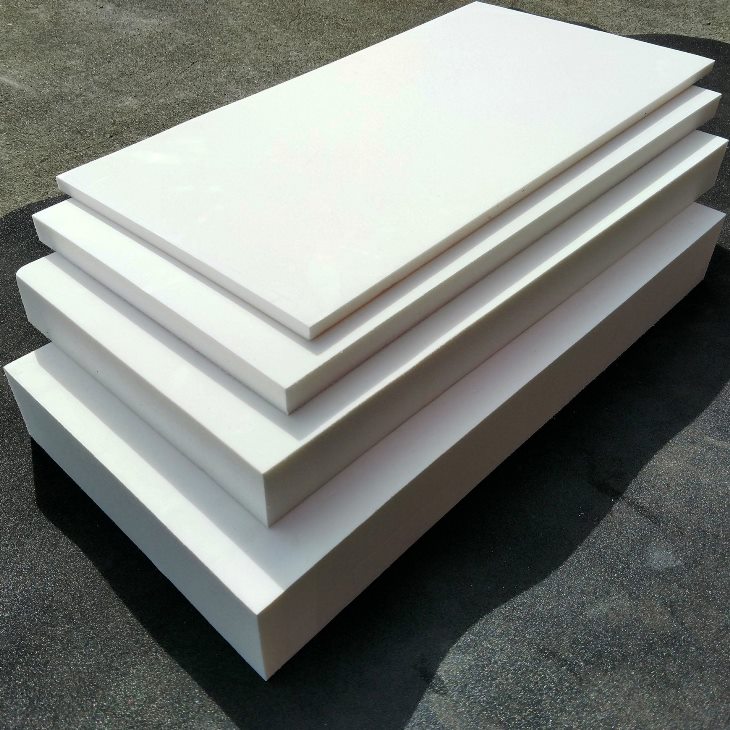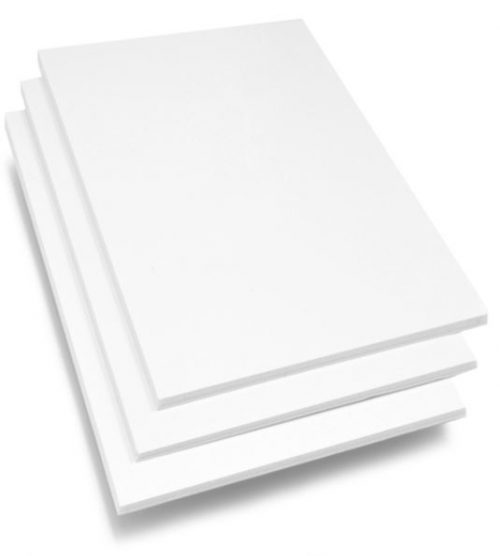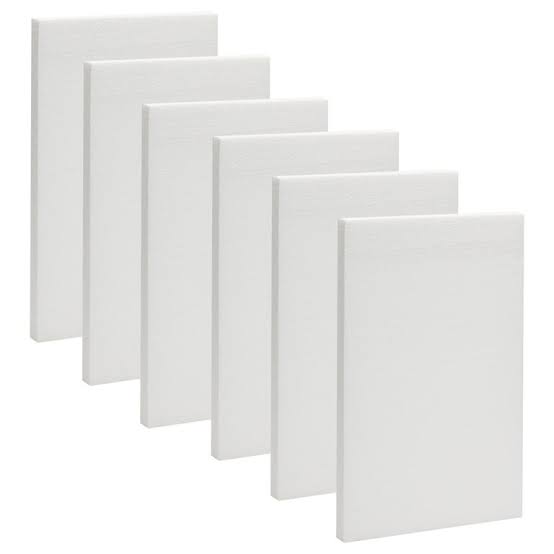
In Olinc Industrial, we are the leading suppliers of styrofoam sheets in Nairobi Kenya and in East Africa.We have different sizes, 25mm, 50mm, 100mm and 150mm.
Features of styrofoam sheets
Lightweight: Styrofoam sheets are exceptionally lightweight, making them easy to handle, transport, and install. Their low weight makes them ideal for applications where minimizing weight is important, such as packaging, construction, and crafts.
Insulation: Styrofoam sheets have excellent thermal insulation properties, providing resistance to heat transfer. They help regulate temperatures by minimizing heat loss or gain, making them suitable for applications requiring temperature control, such as cold storage, construction insulation, and packaging of temperature-sensitive goods.
Shock Absorption: Styrofoam sheets are known for their cushioning properties, which enable them to absorb shocks and vibrations. This feature makes them effective in protecting fragile items during transportation and handling, reducing the risk of damage or breakage.
Buoyancy: Styrofoam is buoyant, meaning it floats on water. This feature makes it suitable for applications where flotation is required, such as marine buoys, floating docks, and watercraft insulation.
Customizable: Styrofoam sheets can be easily cut, shaped, and molded to fit specific requirements. They can be tailored to various shapes and sizes, making them versatile for a wide range of applications, including packaging inserts, insulation panels, and artistic projects.
Water Resistance: While styrofoam itself is resistant to water, it is not impermeable. However, when properly covered or coated, styrofoam sheets can provide effective water resistance, making them suitable for applications where exposure to moisture is a concern.
Versatility: Styrofoam sheets are highly versatile and find applications across numerous industries, including construction, packaging, arts and crafts, insulation, and manufacturing. Their versatility stems from their lightweight nature, insulation properties, and ease of customization.
Cost-Effective: Styrofoam sheets are generally cost-effective compared to other materials with similar properties. Their low production costs make them an economical choice for applications where affordability is a consideration, such as packaging and construction insulation.
Recyclability: Styrofoam sheets can be recycled, although recycling practices and availability vary by location. Recycling styrofoam helps reduce waste and minimize its environmental impact, making it a more sustainable option compared to disposal in landfills.
Styrofoam sheets are applied differently,
- Applications of styrofoam sheets in cold room
Styrofoam sheets, also known as expanded polystyrene (EPS) sheets, are commonly used in the construction and insulation of cold rooms or refrigerated storage spaces.
Here are several applications of styrofoam sheets in cold rooms:
Insulation: Styrofoam sheets are excellent insulators, providing thermal resistance to heat transfer. In cold rooms, they are used as insulation material to maintain the desired low temperatures inside the space. The insulating properties of styrofoam help to prevent heat from entering the cold room and minimize temperature fluctuations, ensuring the efficient operation of refrigeration systems and preserving the quality of perishable goods stored within.
Wall Panels: Styrofoam sheets are often used as wall panels in the construction of cold rooms. They are lightweight and easy to install, making them ideal for creating insulated walls that help maintain a consistent temperature inside the cold room. The panels are typically installed between structural framing members and covered with a protective layer, such as metal or plastic, to enhance durability and hygiene.
Ceiling and Floor Insulation: In addition to wall panels, styrofoam sheets are also used for insulating cold room ceilings and floors. By insulating these surfaces, styrofoam helps minimize heat transfer through the roof and ground, further improving the energy efficiency of the cold room and reducing cooling costs.
Door Insulation: Styrofoam sheets can be incorporated into the construction of cold room doors to provide insulation and prevent heat infiltration. Insulated doors help maintain the cold room’s interior temperature and prevent condensation, ensuring the integrity of stored goods and reducing energy consumption by refrigeration systems.
Air Duct Insulation: Cold rooms often include air ducts for ventilation and circulation of cold air. Styrofoam sheets can be used to insulate these ducts, reducing heat transfer between the cold air inside the ducts and the surrounding environment. Insulated air ducts help maintain the cold room’s temperature uniformity and improve energy efficiency.
Customized Insulation: Styrofoam sheets are versatile and can be easily cut and shaped to fit specific areas or irregular surfaces within a cold room. This allows for customized insulation solutions, such as insulating corners, joints, and other areas where heat transfer may occur.
Condensation Prevention: Styrofoam sheets help prevent condensation buildup within cold rooms by providing a thermal barrier between the cold interior and the warmer exterior environment. This helps minimize moisture accumulation, which can lead to mold growth, corrosion, and deterioration of stored goods and equipment.
- Applications of styrofoam sheets in transportation
Styrofoam sheets, also known as expanded polystyrene (EPS) sheets, have several applications in transportation due to their lightweight, insulating properties, and versatility.
Here are some common applications:
Cargo Packaging: Styrofoam sheets are used extensively in the packaging of fragile and sensitive cargo during transportation. They are often cut and molded to fit around items, providing cushioning and protection against impacts and vibrations. This is especially important for delicate goods such as electronics, glassware, ceramics, and artwork.
Insulation in Shipping Containers: Styrofoam sheets are utilized to insulate shipping containers, including refrigerated containers (reefers), to maintain specific temperature ranges during transit. By lining the interior walls and doors of containers with styrofoam sheets, the insulation helps preserve the quality and integrity of temperature-sensitive goods, such as food, pharmaceuticals, and chemicals.
Pallet Cushioning: Styrofoam sheets are often placed between layers of goods on pallets to provide cushioning and protection during transportation. This helps prevent damage caused by stacking, handling, and shifting of cargo on pallets, reducing the risk of breakage and spoilage.
Vehicle Insulation: Styrofoam sheets are used for insulating vehicles, including trucks, trailers, and vans, to regulate internal temperatures and improve energy efficiency. They can be installed in vehicle walls, ceilings, and floors to provide thermal insulation, reducing heat transfer from the environment and maintaining comfortable conditions for cargo and passengers.
Custom Crating and Dunnage: Styrofoam sheets are employed in the construction of custom crates and dunnage to secure and protect irregularly shaped or oversized cargo during transportation. They are cut and shaped to create custom-fit packaging solutions that provide support, cushioning, and shock absorption for specialized items.
Vehicle Roof Racks: Styrofoam sheets can be used as padding or protective inserts on vehicle roof racks to cushion and secure bulky or awkwardly shaped cargo, such as kayaks, surfboards, and bicycles, during transportation. The lightweight nature of styrofoam makes it an ideal material for rooftop applications without adding significant weight to the vehicle.
Soundproofing and Vibration Damping: Styrofoam sheets are sometimes used in vehicles, especially in automotive and aerospace applications, for soundproofing and vibration damping. By absorbing sound waves and dampening vibrations, styrofoam helps improve the acoustic comfort and ride quality of vehicles, enhancing the overall transportation experience for passengers and reducing noise pollution.
- Applications of styrofoam sheets in sound proofing
Styrofoam sheets can be effectively used in soundproofing applications due to their lightweight nature and ability to absorb sound waves. While they may not offer the highest level of soundproofing compared to specialized acoustic materials, they can still provide noticeable improvements in reducing noise transmission.
Here are some applications of styrofoam sheets in soundproofing:
Wall Insulation: Styrofoam sheets can be installed between studs or attached directly to walls to help dampen sound transmission between rooms. They act as a barrier to absorb and reduce airborne noise, such as voices, music, or television sound, passing through walls.
Ceiling Tiles: Styrofoam sheets can be used as ceiling tiles to improve sound absorption and reduce reverberation in rooms. By installing styrofoam tiles on the ceiling, you can help minimize echoes and create a quieter environment, especially in spaces with hard surfaces that tend to reflect sound, such as offices, classrooms, and recording studios.
Floor Underlayment: Installing styrofoam sheets as underlayment beneath flooring materials can help reduce impact noise, such as footsteps or furniture movement, transmitted through floors. This is particularly beneficial in multi-story buildings or apartments where noise from upstairs units can be a concern.
Room Dividers: Styrofoam sheets can be used to create temporary or movable room dividers or partitions to provide sound isolation between different areas within a room. By placing styrofoam panels between frames or fabric coverings, you can create lightweight and portable barriers that help block sound transmission.
Recording Studios: Styrofoam sheets are commonly used in recording studios as part of acoustic treatment to minimize unwanted reflections and control reverberation. They can be installed on walls, ceilings, and even around microphones to create a quieter and more controlled acoustic environment for recording music, vocals, or other audio.
Home Theaters: Styrofoam sheets can be utilized in home theaters to improve sound quality by reducing echo and background noise. Installing styrofoam panels on walls and ceilings can enhance the acoustics of the space, allowing for a more immersive audio experience during movie viewing or gaming.
Equipment Enclosures: Styrofoam sheets can be used to construct enclosures or housings for noisy equipment or machinery to contain and dampen sound emissions. By surrounding the equipment with sound-absorbing material, you can help reduce noise pollution and maintain a quieter environment in surrounding areas.
Advantages of styrofoam sheets
Lightweight: Styrofoam sheets are exceptionally lightweight, making them easy to handle, transport, and install. This characteristic is particularly advantageous in applications where weight reduction is essential, such as packaging, construction, and crafts.
Insulation: Styrofoam sheets have excellent thermal insulation properties, providing resistance to heat transfer. This makes them ideal for applications requiring temperature control, such as cold storage, construction insulation, and packaging of temperature-sensitive goods.
Shock Absorption: Styrofoam sheets possess cushioning properties, allowing them to absorb shocks and vibrations. This feature makes them effective in protecting fragile items during transportation and handling, reducing the risk of damage or breakage.
Moisture Resistance: Styrofoam is resistant to moisture, which helps maintain the integrity of the material even in humid or wet conditions. This makes it suitable for applications where exposure to moisture is a concern, such as packaging of perishable goods and construction in damp environments.
Customizability: Styrofoam sheets can be easily cut, shaped, and molded to fit specific requirements. They can be tailored to various shapes and sizes, making them versatile for a wide range of applications, including packaging inserts, insulation panels, and artistic projects.
Buoyancy: Styrofoam is buoyant, meaning it floats on water. This feature makes it suitable for applications where flotation is required, such as marine buoys, floating docks, and watercraft insulation.
Versatility: Styrofoam sheets find applications across numerous industries due to their lightweight nature, insulation properties, and ease of customization. They are used in construction, packaging, arts and crafts, insulation, and manufacturing, among other sectors.
Cost-Effectiveness: Styrofoam sheets are generally cost-effective compared to alternative materials with similar properties. Their low production costs make them an economical choice for applications where affordability is a consideration, such as packaging and construction insulation.
Recyclability: Styrofoam sheets can be recycled, although recycling practices and availability vary by location. Recycling styrofoam helps reduce waste and minimize its environmental impact, making it a more sustainable option compared to disposal in landfills.




